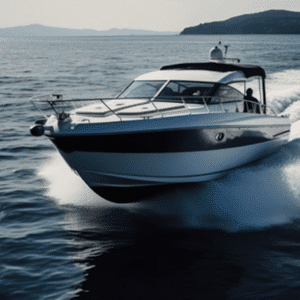What is osmosis?
Osmosis is a natural phenomenon. It’s a force that arises from an imbalance between two media of different concentrations, separated by a semi-permeable membrane.
In the case of a boat, the hull floats on a low-concentration liquid, water. Since hulls are always relatively permeable, water can infiltrate and concentrate in certain places, gradually taking on the molecules present in the fiber and resin. The gelcoat then becomes a semi-permeable membrane separating two media of different concentrations. The less concentrated liquid is pushed through the membrane by osmotic pressure towards the more concentrated medium. It is this infiltration of water, exacerbated by osmotic force, that leads to blistering and hull degradation.
Aggravating factors
The more imperfections in a boat’s hull, the greater the risk of osmosis. The quality of a boat’s construction (quality of resins used, quality of resin debubbling during production, resin polymerization) is therefore the primary factor limiting the occurrence of the phenomenon. Note that much progress has been made in recent years in the hull production process.
The age of the boat, its immersion time, the quality of the water (fresh or salt water), the sailing areas (cold or tropical) and the quality of the initial protection are all factors that can favor osmosis. However, it is now generally accepted that a properly protected boat wintered in dry conditions for 3 to 6 months of the year will develop little or no osmosis problems.
Prevent osmosis
Water is the smallest liquid molecule in existence, so it can naturally seep into any substrate. To prevent this, reinforce the gelcoat with several coats of epoxy primer (Nautix Epoxygard or HPE type) or polyurethane primer (Nautix PO type). 5 coats are generally recommended (approx. 300 µm of dry paint) to slow down water penetration. Reinforcement of this membrane should be repeated every 5 to 10 years, depending on the boat’s use. For example, it’s not uncommon for boatyards on lakes to apply 7 coats of osmosis preventive, as freshwater is more aggressive than seawater.
When applying an osmosis preventive to an old boat, we strongly advise you to test the boat’s residual humidity! This is to avoid trapping water already present in the hull by applying the preventive, which would have the opposite effect to that intended.






